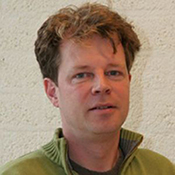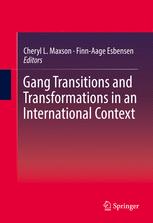European youth group violence, in some instances, has assumed qualities more commonly associated with American youth gangs. In response to this new development, a group of European and American researcher convened in a series of meetings and workshops from 1998 to 2018 to discuss the Eurogang phenomenon. This Eurogang Network seeks to develop a multi-method, multi-national research program that will allow for comparative examination of this important emerging social issue. Importantly, this research and the knowledge-base that comes out of it will help inform prevention and intervention policies to reduce the negative consequences of these increasingly socially excluded and violent youth groups.
Emerging from the European meetings was a consensus calling for a collaborative and comprehensive strategy to develop a better understanding of the diversity of these emergent youth groups. These are the three primary objectives:
- To build a foundation of knowledge regarding the European socio-economic conditions and institutional processes that foster or curtail the social exclusion and subsequent emergence and persistence/dissolution of youth gangs and problematic groups;
- To construct an infrastructure for comparative, multi-method, cross-national research on youth violence in group contexts;
- To disseminate and effectively utilize knowledge to inform the development of effective local, national, and international responses to emerging youth crime and violence issues.
Network activities derive from these knowledge-building, methodological and dissemination objectives:
- A network of researchers representing national teams will collate extant knowledge about gangs and youth groups in Europe. Researchers and practioner/policy experts will comprise each national team. Outreach efforts will incorporate young researchers and expand each team's composition.
- The network will establish research priorities and a framework of working groups to address the challenges of multi-method, comparative research.
- Methodologically focused working groups have developed research protocols to achieve scientifically based comparative data, including ethnographic, expert informant, and survey methods on city/neighborhood, group and individual levels of measurement.
- Dissemination activities are integrated throughout the network project. Presentations to international forums, as well as national and local meetings, will diffuse accumulated knowledge.

Emma Alleyne – studies the psychological characteristics of street gang members.
University of Kent, Canterbury, UK

Jan Dirk de Jong – with interests in group dynamics and gang intervention.
University of Applied Science, Leiden, Netherlands

Finn-Aage Esbensen – is interested in the causes and correlates of youth violence and the role of youth gangs on adolescents; evaluation of gang prevention efforts.
University of Missouri-St. Louis, USA
esbensen@umsl.edu

Cheryl Maxson – methods for studying gangs; patterns of gang activity in an international context; efficacy of programs and policies to reduce gang activity.
University of California, Irvine, USA

Chris Melde – studies the impact of gang membership on adolescent development and the efficacy of gang prevention and intervention programs.
Michigan State University, USA

Elke Van Hellemont – with interests in the ethnographic study of gangs and urban youth violence.
University of Leuven, Belgium

Frank Weerman – interests include the role of peers in delinquent behavior, social networks, and co-offending
Netherlands Institute for the Study of Crime and Law Enforcement, Netherlands
Early in the history of the Eurogang Project, five working groups were established to discuss issues associated with specific methodologies associated with gang research. These groups targeted not only different methodologies but also different levels of aggregation (ranging from individual to group to city level). Over the course of several years of discussion, translation, and pre-testing, draft instruments were finalized and can be viewed by clicking the desired link. The following instruments were developed and pre-tested: City-level Instrument; Ethnography Guidelines; Expert Survey; Prevention and Intervention; Youth Survey. The Expert and Youth Surveys were also translated into several languages.
Members of the Eurogang Network are well-published in top peer-reviewed journals. These contributions to the literature include empirical and review articles encompassing the Eurogang's methodologies and frameworks. The meetings have also led to the compilation of some of the leading edited books on youth gangs and delinquent youth groups. These books are included below.

The Eurogang Paradox - Street Gangs and Youth Groups in the U.S. and Europe
Edited by Malcolm Klein, Hans-Jürgen Kerner, Cheryl Maxson, and Elmar Weitekamp.

European Street Gangs and Troublesome Youth Groups
Edited by Scott Decker and Frank Weerman.

Street Gangs, Migration and Ethnicity
Edited by Frank van Gemert, Dana Peterson, and Inger-Lise Lien.

Youth Gangs in International Perspective: Results from the Eurogang Program of Research
Edited by Finn-Aage Esbensen and Cheryl Maxson.

Gang Transitions and Transformations in an International Context
Edited by Cheryl Maxson and Finn-Aage Esbensen.

